#Museum of National History in Sofia
Explore tagged Tumblr posts
Text
Bulgaria and the fall of the Bloc
We visited the Socialist Art Museum and the Museum of National History in Sofia, both small museums. They are on opposite sides of the city, about 7 kilometers apart. We traversed the distance by city bus, scanning our credit cards to pay the fare. The Sofia we saw on the route is not pretty, unlike the city center where we are staying with its some sparkling monumental buildings, parks and…
0 notes
Text









National Museum of History, Bulgaria
15 notes
·
View notes
Text
Celebrated ‘Armor of Thracian Warriors’ Exhibition to Be Showcased at Valley of Odrysian Kings
Part of a poster for the “Panoply of the Thracian Warriors” exhibition developed by Bulgaria’s National institute and Museum of Archaeology in Sofia А poster presentation of the celebrated exhibition entitled “The Panoply of the Thracian Warriors,” a project of Bulgaria’s National Institute and Museum of Archaeology, is set to be showcased in Kazanlak as part of the annual Celebrations at the…
#Agighiol tomb#armor#Bulgarian Academy of Sciences#burial mound#burial mounds#corslet#exhibition#Golyama Kosmatka Mound#Golyama Kosmatka Tomb#greave#greaves#helmet#Kazanlak#Kazanlak Museum of History#Kazanlak Valley#King Seuthes III#mask helmet#Mezek Tomb#Mogilanska Mound Treasure#National Institute and Museum of Archaeology#Odrysian Kingdom#Odrysians#poster exhibition#Romania#Ruets#Ruets tomb#Seuthes III#sheath#Sofia University "St. Kliment Ohridski"#Svetitsata (The Saint) Mound
0 notes
Text
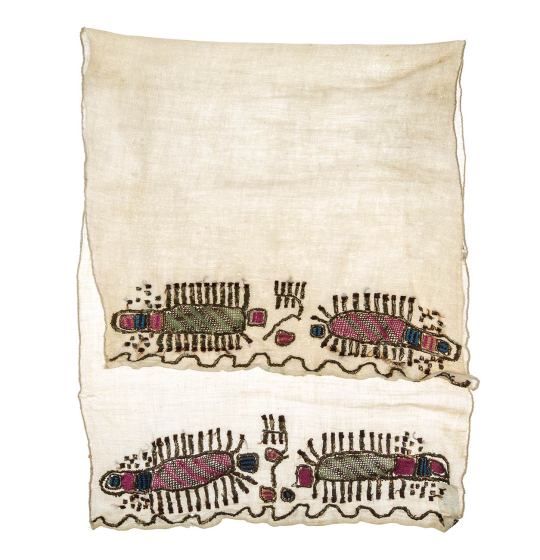
Decorative towel, with embroidered animal figures ("millipedes"). 19th century.
Sofia, Bulgaria.
Bulgarian National Museum of History
#bulgaria#19th century#eastern europe#household textiles#bulgarian#bulgarian national museum of history
180 notes
·
View notes
Text

A gold wreath and gold ring from the burial of an Odrysian aristocrat(ca 4th century BCE), the central figure of the wreath is Nike wearing a peplos on top of a chiton and the ring features a woman accompanied by a horse and rider. National Museum of History, Sofia, Bulgaria.
#artifacts#art#photography#architecture#ancient art#jewelry#archeology#history#ancient civilizations#painting#curators on tumblr
145 notes
·
View notes
Text
Archaeologists in Bulgaria have discovered a second marble statue in the great canal of the ancient city of Heraclea Sintica. The find was made by a team led by Prof. Dr. Ludmil Vagalinski from the National Archaeological Institute with Museum at the Bulgarian Academy of Sciences (NAIM-BAS). This new discovery was made in the same location where, months earlier, an almost completely preserved statue of a ruler, depicted as the god Hermes, was unearthed.
The newly found statue, which measures about two meters in length, was found lying face down in the canal, but its head is missing. Archaeologists believe the head likely broke off during an earthquake and is unlikely to be located nearby. In addition to the missing head, the right wrist of the statue is also absent. Despite these missing parts, the statue remains an impressive and valuable find.
According to Prof. Vagalinski, this second statue appears to mirror the earlier discovery, and it is believed that the two statues were placed symmetrically along the canal, forming part of a larger artistic or symbolic complex. He also noted that a statue found in 2018, near but outside the canal, may be connected to this recent discovery in terms of its story or characters.
Excavations in the Great Canal are ongoing, not only to uncover more artifacts but also to clear the embankment of accumulated rubble and moisture, which erodes the canal walls. The embankment, according to experts, consists of debris left by survivors of the ancient city after powerful earthquakes in the late 4th century AD, combined with clay brought in by tidal river waves.
The newly discovered statue is expected to be fully unearthed, carefully packed, and transported to the Historical Museum in Petrich by October 3. The team will use the same company and equipment that moved the first statue. Although no further statues are expected to be found in the same location, this discovery continues to shed light on the rich history of HHeraclea Sintica.
8 notes
·
View notes
Text
“Venda Sexy” location of sexual torture of leftist women, has been seized by the Chilean state
Even the name "Venda Sexy" or "Sexy Blindfold", also known as the Discotheque, is evocative of its meaning. This was a sexual hell for women, but a place of recreation for Junta guards. With terms like Discotheque evocative of a dancing night club. For years Feminist activists in Chile have campaigned to repossess the property and turn it into a memorial museum. But the owners repeatedly refused. Even offering to sell it at a lower price to private developers rather than what the state offered. Finally the Chilean stated has forcibly expropriated the property.
The Association of Memory and Human Rights Iran 3037 reported that after long years of struggle, the State expropriated the property called "Cuartel Tacora" or "Sexy Blindfold" by the National Intelligence Directorate (DINA).
This property was used as a center of torture and extermination by the civil and military dictatorship and had already been declared a Historic Monument by the Ministry of Housing and Urban Planning in 2016.
The expropriation decree was published on September 1 in the Official Gazette, thus culminating the desire of said association to preserve the memory of the survivors and search for justice for the victims of the dictatorship who were in this place.
Alejandra Holzapfel, survivor and spokesperson for the Association, pointed out that "after years of resistance and struggle, we welcome this achievement", pointing out that "for the first time in the history of Chilean jurisprudence we managed to have it recognized and classified as a crime the actions of sexual political violence against the prisoners during the dictatorship, since in this place bloody procedures were experimented with, aberrant procedures that included the use of animals against young people and prisoners”.
The survivor and spokeswoman Alejandra Holzapfel recalled that "33 compañer@s disappeared in terrifying circumstances from this place and hundreds of us managed to survive to continue with renewed strength the denunciations and active struggles that were necessary to recover this property as Chilean patrimony, in protection of our historical memory and prevent the misrepresentations and denial promoted by various sectors of the country”.
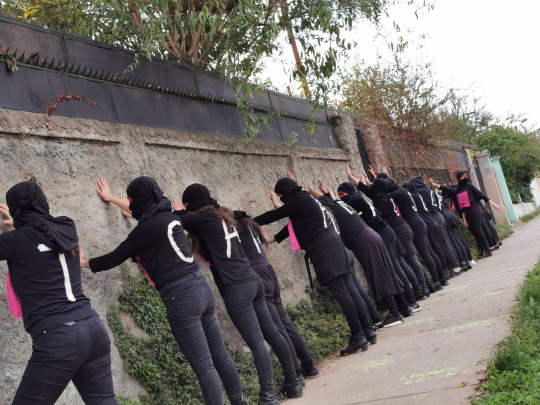

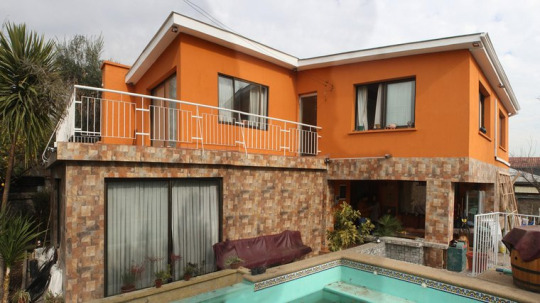
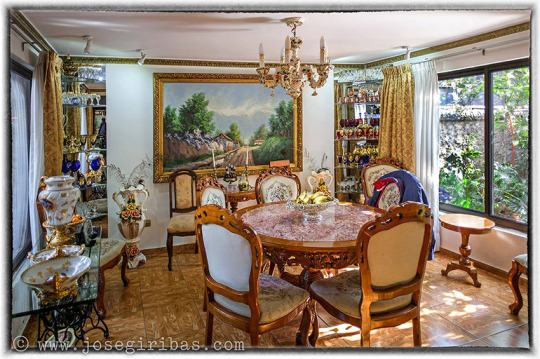
A swimming pool and a luxurious dining table isn't what we usually associate with a torture chamber. But it was part of the deliberate misogynist, patriarchal, fascist tactics of the Junta to demean and demoralize leftist women. To trivialize our suffering. To reduce leftist girls to ornaments and playthings, rather than a serious political threat.
From the memoirs of a MIRista college activist-
As we heard the truck begin to slow down, all of us braced ourselves. Although naked and blindfolded, I reached out to woman sitting next to me, placing a reassuring hand on her arm. Sofia had been a real support over the past few days as we were captured and arrested, and the mere knowledge she was there calmed me as I considered what was to come. Still, we braced ourselves as we prepared for whatever torture awaited us on the other end, the cold metal of the truck freezing against our bare asses.
"Comrades." Maria began, in her usual speechmaking voice. While some of us had known her for years and others only days, we didn't even need to be able to see her for all of us to play attention when she spoke, she just had that air about her. "I don't know what awaits us outside this truck. I have no doubt that they hope to break us. That all of us may very well experience pain the likes of which we've never felt or even imagined before. But we have to fight. Cooperate and we'll find ourselves shot once we've outlived our uselessness, dying for nothing but their own vindication. If we fight then it will be hard, and we may die, but we'll die free. That's something they'll never be able to understand".
Some of us wondered if there was a bit more to Maria's speech after the pause, but the vehicle's abrupt stop meant that it was time to put those words into action. And I intended to do exactly that, as did Sofia. Like I said, Maria was the kind of woman who you'd follow into hell, and although we couldn't see we all knew that she'd no doubt have a look on her face as though she intended to singlehandedly fight every fascist alive, I think we all got a bit of her courage too. For a few moments.
All of us felt ourselves pulled out the truck by hard masculine hands, and despite a few angry grunts we couldn't offer much resistance. One of the first things I felt was sunlight and gentle wind, almost as though I were outside, leading me to believe we'd been taken to a camp. Nobody spoke, but the next thing I heard was splashing of water and panicked screams. Immediately I started preparing myself to be waterboarded, taking long deep breaths.
As the blindfold got removed, I honestly froze for a few moments, unsure what on earth to do on think. I saw in front of me what almost looked like a holiday resort, with a large pool filled with bits of cloth and sun loungers everywhere. The army of shirtless soldiers and smirking generals shattered any illusions of pleasure, but at the time it causes so many question I could barely even process what was going on.
I remember seeing the sight in front of me as Maria and the other leaders were getting dunked into the pool mercilessly, as each guard took the chance to joyously slap their rear following each dunk. I even saw one of them tear out a woman's earring, before roughly stabbing her body with it. I saw Maria's mouth move under the water, but I had no idea if that was screams or a triumphant speech.
"Listen up, whores." One of the soldiers began, pacing back and forth as he faced us and let his eyes wander over our bodies. "In the pool you'll find bikinis. Get one. You may only use your teeth. If you don't, you'll be taken to the facility, although we haven't decided yet if we'll start with whipping or electro-shocks. There aren't enough bikinis for all of you." He calmly declared, smiling at all of us as he waited a few moments for it to sink in. "Better move quickly."
I remember the panic the moment he finished, and the feeling as someone behind me pushed me out of the way, desperate to get her own swimwear first. A few of the women fell over each other. Someone tripped and went face first into the pool. In desperate panic to avoid torture, I charged forward as well, reaching down with my mouth to bite a pair of bottoms. I saw the matching bra, and moved for it, but so did Sofia.
Barely thinking, I stuck out my arm, prompting Sofia to trip into the pool as well. Without thinking, I grabbed the bra and jumped to the side, gripping the swimwear with my teeth as though it were my most prized possession, snarling like an animal who's just caught her meal. One of the guards smiled at me.
I watched the scene unfold as it slowly set in what I just did. I saw Sofia frantically splash about in the water, desperate to find her own pair as they all slowly disappeared, all the while the screams of our leaders reminding us of the alternative. Then finally, they were all gone. A large handful of women got picked up afterwards by the guards, including Maria and Sofia.
"Oh, I can't wait to hear you scream once I start shocking these tits, you Marxist whore!" One guard shouted as he roughly slapped Sofia's chest, before gripping her tightly against his body, feeling every inch of her. She screamed, but nobody cared. I couldn't take my eyes away as I watched her disappear behind the door, screaming even louder.
"Outfits on, whores. We're going to have lots of fun today!" The man from earlier shouted, and we all obediently did put on our bikinis. To be honest I was just grateful to have a bit of decency, even if it was something I'd normally never get caught dead in. As I looked around at the panicked expressions of my compatriots, things only got more complicated as we saw more men march towards us.
One of us got picked up and sat next to the pool with some old man. One rather large man picked up three girls and made them lie on top of him like he was a god. I was unfortunate to be picked up by a man easily old enough to be my father and with a burning hatred in his eyes. He dragged me along to a seat by the poolside and wrapped me over his knee.
"Get- Get your hands off..." I began protesting, not entirely sure where I was going with this but just doing it out of instinct. He responded with a firm slap on my ass through the thin fabric of the bikini, followed by the feeling of his groping hands roaming all over my body, prompting my skin to crawl.
"Watch your tongue, you little slut. You know this is your place. You know is what socialist cunts like you deserve. Tell me, that you deserve this. Tell me that a slut like you wants this." He ordered, before giving me a series of harsh slaps again, each prompting an even louder scream.
"I... I..." I was completely dumbfounded, unable to even comprehend these demands. I thought that there's no way I'd degrade myself like that for his amusement, even in this position. Right in front of me was the sight of the man from earlier with the three girls, as he groped two with both his hands as he roughly raped the third, in clear daylight. To my left was one man lying at the side of the pool, gripping a girl in either arm and letting his hands wander all over there bodies as they both looked away disgusted.
13 notes
·
View notes
Text

4th century BC, bronze Thracian helmet discovered at the village of Pletena, Bulgaria. Now in the national history museum in Sofia.
21 notes
·
View notes
Text
Sofia: The Hidden Gem of the Balkans
Located in the heart of the Balkans and having hosted numerous civilizations throughout history, Sofia, the capital of Bulgaria, is a true paradise for travelers with its rich cultural heritage, historical landmarks, and breathtaking views. Here are some of the must-visit places in Sofia:
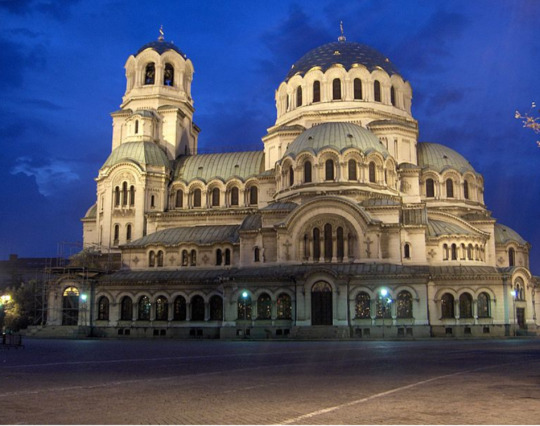
1. Alexander Nevsky Cathedral: One of the symbols of the city, this magnificent cathedral was designed by Russian architect Alexander Pomerantsev in the 19th century. Built in honor of Tsar Alexander Nevsky, a Bulgarian national hero, the cathedral enchants visitors with its architectural elegance and mosaic interior.


Icon of St. Eudokia
2. Boyana Church: Located just outside Sofia in the village of Boyana, these churches are included in the UNESCO World Heritage List for their frescoes dating back to the 10th and 13th centuries. With its historical and artistic significance, it's a fascinating destination to explore.
------------------------------------------------------------------------------
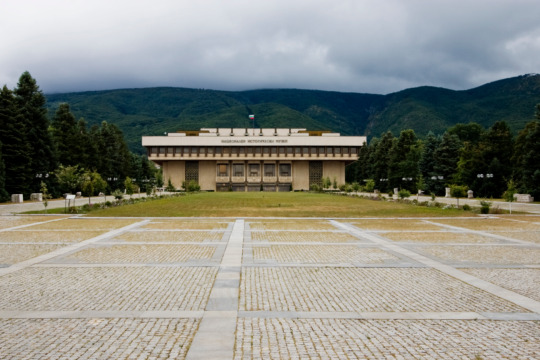
3. National Museum of History: Ideal for those who want to delve into Bulgaria's rich history in detail. The museum houses a wide range of historical collections spanning from ancient times to the Middle Ages, from the Ottoman period to the Bulgarian National Revival.
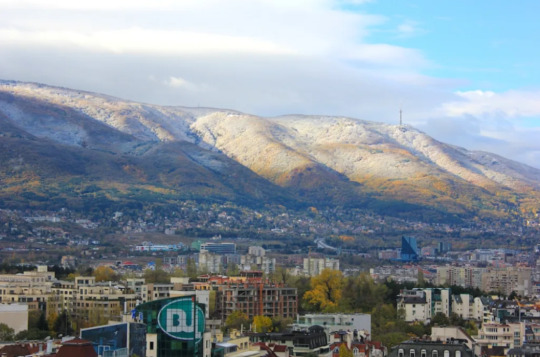
4. Vitosha Mountain: Vitosha Mountain, located near Sofia, is a wonderful escape for nature lovers. Throughout the year, it offers outdoor activities such as trekking, mountain biking, and skiing. The villages at the foot of the mountain are also interesting stops for travelers.
5. Roman Thermae: The ruins of the Roman Baths in the center of Sofia are an important relic from the ancient Roman period. Visitors can see the remains of ancient thermal baths and learn about life during the Roman era.
------------------------------------------------------------------------------
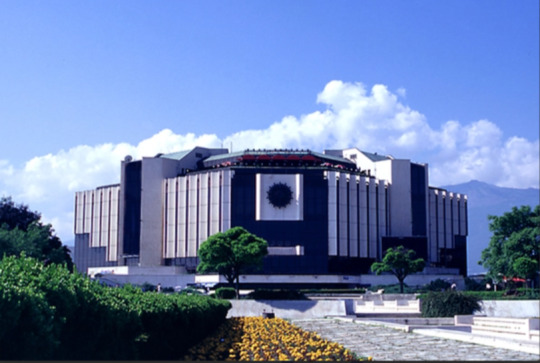
6. National Palace of Culture (NDK): The largest conference and exhibition center in Bulgaria, NDK stands out with its modern architecture and events. It is a popular venue for concerts, exhibitions, festivals, and other cultural events.
Sofia is a city filled with historical and cultural riches. The places listed above will help you explore the city's rich heritage during your visit.
2 notes
·
View notes
Photo

MWW Artwork of the Day (1/27/23) Juan Gris (Spanish, 1887-1927) Portrait de Madame Josette Gris (Oct. 1916) Oil on panel, 140.5 x 97 cm. Museo Nacional Reina Sofia, Madrid (Gift of Douglas Cooper)
This oil painting, a portrait of the artist's wife, Josette Gris, was part of the donation made to the Prado Museum in 1979 by the Cubism historian Douglas Cooper. This work illustrates the shift taking place in Cubism, from rupture to the search for a tradition in the history of painting, in relation to the changes in French politics during the Great War. It is considered one of the sequels of "Woman with Mandolin" (after Corot). Although it is unlikely that Gris made use of one of Corot's figures, instead using Josette herself for her portrait, the very posture she is in has an unmistakeable air of ordinary life, the same tone that Picasso had given his "Woman with Mandolin" before the war. These versions of the French tradition cast doubt on the suggestion that Juan Gris was a Spanish painter, influenced by the Golden Age, and instead place him in the context of the reinterpretation of the French tradition as a consequence of the rise in nationalism during the Great War and the years that followed.
Gris is one of the featured artists in this MWW gallery/album: https://www.facebook.com/media/set/?set=a.1316627485109284&type=3
11 notes
·
View notes
Text
Abigail Child has been at the forefront of experimental writing and media since the 1980s, having completed more than thirty film/video works & installations, and written 6 books. An acknowledged pioneer in montage, Child addresses the interplay between sound and image, to make, in the words of LA Weekly: “brilliant exciting work…a vibrant political filmmaking that’s attentive to form.” Her films rewrite narrative, creating the cult classics PERILS, MAYHEM and COVERT ACTION (1984-87). Other productions borrow documentary to poetically envision public space including B/Side (1996) and SURF AND TURF (2011). Child’s re-constructed home movie THE FUTURE IS BEHIND YOU (2004) served as inspiration for UNBOUND: Scenes from the life of Mary Shelley shot as imaginary home movies. In recent years, Child has expanded her vertical montage to multiple-screen installation with MIRRORWORLDS and THE MILKY WAY. ACTS AND INTERMISSIONS, the second in her trilogy on Women and Ideology, circling around the life of Emma Goldman and a history of protests, premiered at The Museum of Modern Art’s Doc Fortnight in February 2017.
Child is the principal director, cinematographer and editor on her films. Cultural displacements, mostly urban ones, have been at the heart of her concerns. Her work involves intimate collaborations, with poets: Monica de la Torre (To and No Fro), Gary Sullivan (Mirror World), Nada Gordon (Ligatures) and Adeena Karasick (Salomé) as well as with notable downtown composers including John Zorn (The Future Is Behind You), Ikue Mori (B/side, 8 Million), Zeena Parkins (Unbound, Mayhem), Christian Marclay (Mayhem, Surface Noise) and Andrea Parkins (Vis A Vis and Acts and Intermissions). Child is currently working on the last film in the trilogy "The Andriod Project" (wt).
Her films, compulsive visual and aural legerdemain, have been widely awarded and shown internationally. Child has been honored with a Rome Prize Fellowship (09-10), as well as a John Simon Guggenheim, Radcliffe Institute and Fulbright Fellowships. She is winner of the Stan Brakhage Award, and grants from the National Endowment for the Arts, New York State Council on the Arts, New York Foundation for the Arts, Jerome Foundation, LEF Foundation, Mass Arts Council, and Art Matters. Child's film and media works have been exhibited worldwide, in venues including The Museum of Modern Art, New York; the Whitney Biennial Exhibitions (1989+1997); Centre George Pompidou, Paris; Rotterdam International Film Festival; New York Film Festival; CAPC Musée, Bordeaux; Museo Reina Sofia, Madrid; Pacific Film Archives, Berkeley; and festivals in Oberhausen, Locarno, Berlin, Toronto, Brazil, Mexico City and Seoul, among many others. Her work is in the collections of the Museum of Modern Art New York and Centre Pompidou among others. Harvard University Cinematheque has created an “Abigail Child Collection” which will preserve and exhibit her films.
Child is also a writer with more that 5 books and numerous chapbooks. Her critical study, THIS IS CALLED MOVING: A Critical Poetics of Film (2005) is the only critical book written by an active American artist/filmmaker in over two decades. Her book of poetry MOUTH TO MOUTH came out in 2016, courtesy of Eoagh Press and was honored with a Lambda Prize in 2017. Child is Emeritus Professor of Media at Tufts University, the SMFA, and lives and works in New York City.
youtube
5 notes
·
View notes
Text

Embroidered chemise sleeve from Sofia region, Bulgaria. | Шевица от ръкав (свиленица) на женска риза, Софийско.
(source: Bulgarian National History Museum)
3 notes
·
View notes
Text


Gold wreath with rosette appliques from Malomirovo-Zlatinitsa, 375-350 BCE. National History Museum, Sofia, Bulgaria
1 note
·
View note
Text
Happy Unification Day: Bulgaria Celebrates 139th Anniversary since National Reunification of Principality of Bulgaria and ‘Eastern Rumelia’ in 1885
This rare postcard showcased by the National Museum of History in Sofia depicts the arrival of triumphant volunteer units in Plovdiv to support and celebrate the Unification of the Principality of Bulgaria and Eastern Rumelia on September 6, 1885. Photo: National Museum of History Bulgaria celebrates on Thursday, September 6, 2018, the 139th anniversary since the Unification of what is today…
#April Uprising#Austria-Hungary#Berlin Congress#Berlin Treaty#British Empire#Early Renaissance art#Eastern Rumelia#Germany#Great Britain#Januarius MacGahan#national holiday#National Revival#National Unification#Otto von Bismarck#Ottoman Empire#Ottoman Turkey#Ottoman yoke#Plovdiv#Principality of Bulgaria#Russia#Russian Empire#Russian-Turkish War of 1877-1878#Saedinenie#San Stefano Treaty#Serbian-Bulgarian War of 1885#UK#Unification Day
0 notes
Text
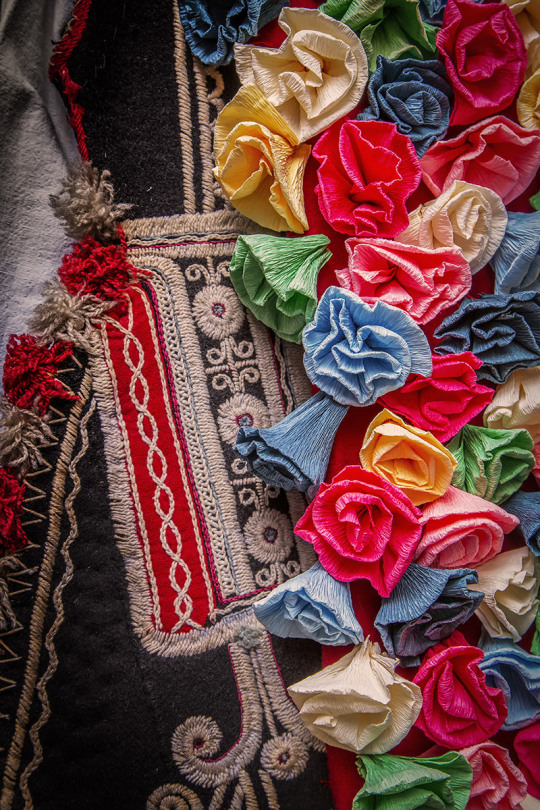
Details from the overcoat of a young woman (worn to celebrate Lazarus' Day) (early 20th century)
Sofia region, Bulgaria
Bulgarian National Museum of History
56 notes
·
View notes
Photo
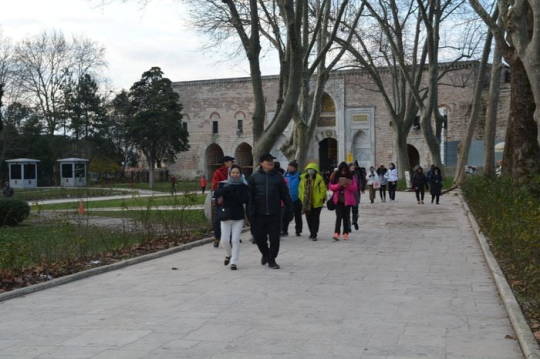
Bulgarian Icon Painting
Medieval Traditions and Monasteries
Bulgarian icon painting has roots in the rich medieval traditions of Athos and the old Bulgarian monasteries such as the Rila Monastery, the Bachkovo Monastery, and others near Sofia, Plovdiv, and Turnovo. These monasteries were not only centers of religious and spiritual life but also hubs of literary and educational activities. They played a crucial role in preserving Bulgarian culture and fostering the idea of national independence. The monks and artists in these monasteries worked hard to keep the tradition of icon painting alive, contributing to the spiritual and cultural maturation of the Bulgarian people.
The Bond Between Icon Painting and National Art
Another important aspect of Bulgarian icon painting is its connection to national art and folklore. This bond gave the art a distinctly democratic character. In the 17th century, Bulgaria experienced an economic boom, with many towns thriving and producing goods for the Ottoman Empire and trading with Western and Central Europe. This economic progress naturally fueled the development of art. Many beautiful icons from this period have survived, originating from bustling towns like Nessebur, Plovdiv, Turnovo, Etropole, Vratsa, and Lovech, which were also artistic centers.
The National Revival and Enlightenment
The 18th and 19th centuries marked the peak of the Bulgarian National Revival and Enlightenment. During this time, national art schools were established in several towns, including Samokov, Tryavna, Bansko, and Strandja. Each of these schools had its own unique style and techniques. Some notable painters from these schools were Hristo Dimitrov, Zahari Zograf, and Stanislav Dospevski from Samokov; Papa Vitanov and Zahari Tsanyov from Tryavna; Toma Vishanov and Dimiter Molerov from Bansko; and Alexo Odrinchanin and Nikola Konstantinov from Strandja Tours Bulgaria.
These artists created remarkable works that are significant in the history of Orthodox Balkan art. For example, Zahari Zograf painted in the Great Monastery of St. Athanasius in Athos, while Mitrophan Zograf from Strandja worked in the St. George Monastery in Sveta Gora. Painters like Ditcho Zograf and others from Debar decorated many churches in the southeastern Balkan countries. True to the spirit of the Revival, these artists transformed the traditional rigid canonical style into a more vibrant and life-affirming art, using bright and cheerful colors instead of the usual austere tones.
The Legacy of Bulgarian Icons
The history of Bulgarian icons reflects the resilience of a small yet passionate Balkan nation. This art form has developed and flourished over ten centuries. Today, the beauty and significance of Bulgarian icons are recognized worldwide, with exhibitions in cities like Paris, London, Moscow, Leningrad, Tokyo, and Mexico City attracting significant interest.
Now displayed in national museums and galleries, Bulgarian icons captivate viewers with their serene and majestic beauty. They stand as a testament to Bulgaria’s contribution to Orthodox art and culture, inviting us into a world of grace and artistic excellence.
0 notes